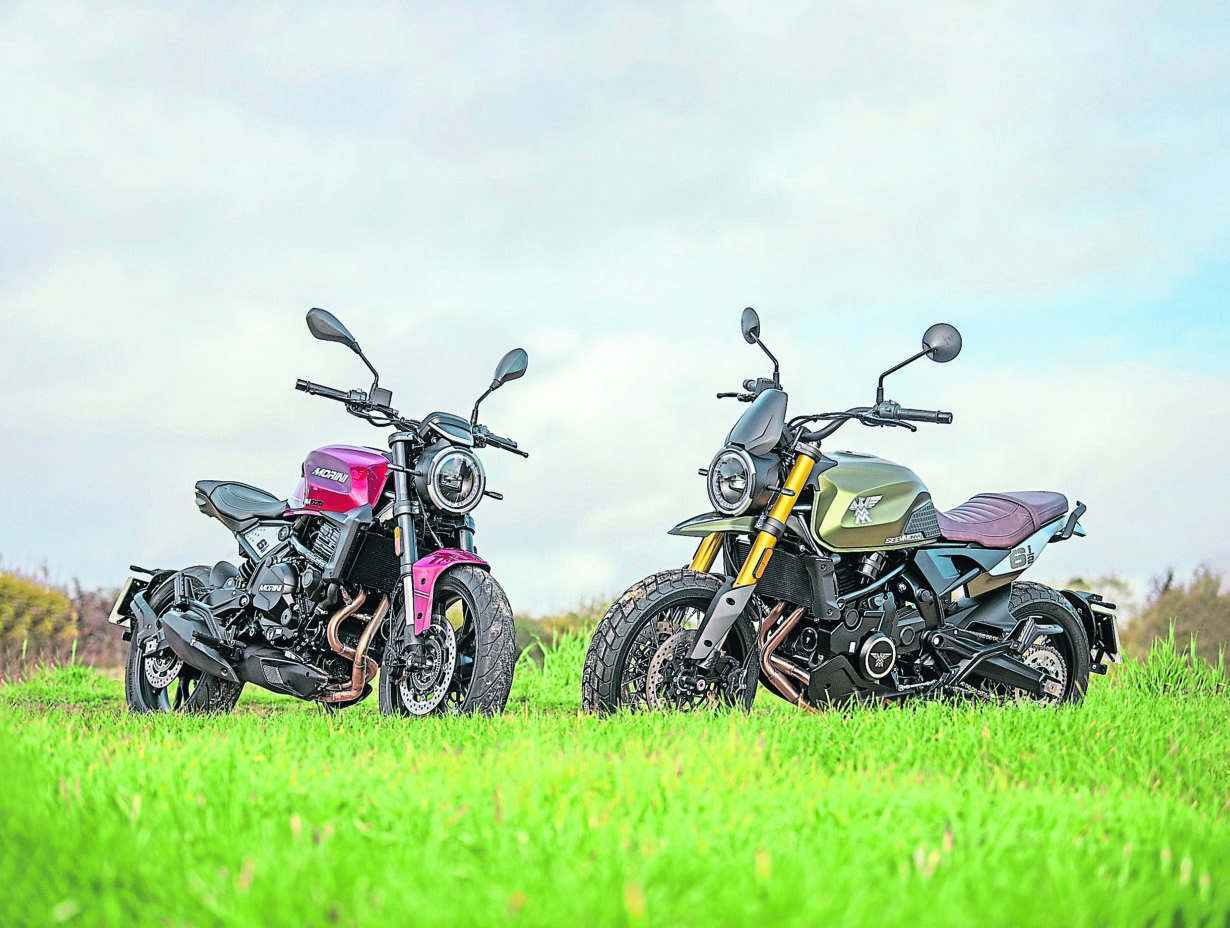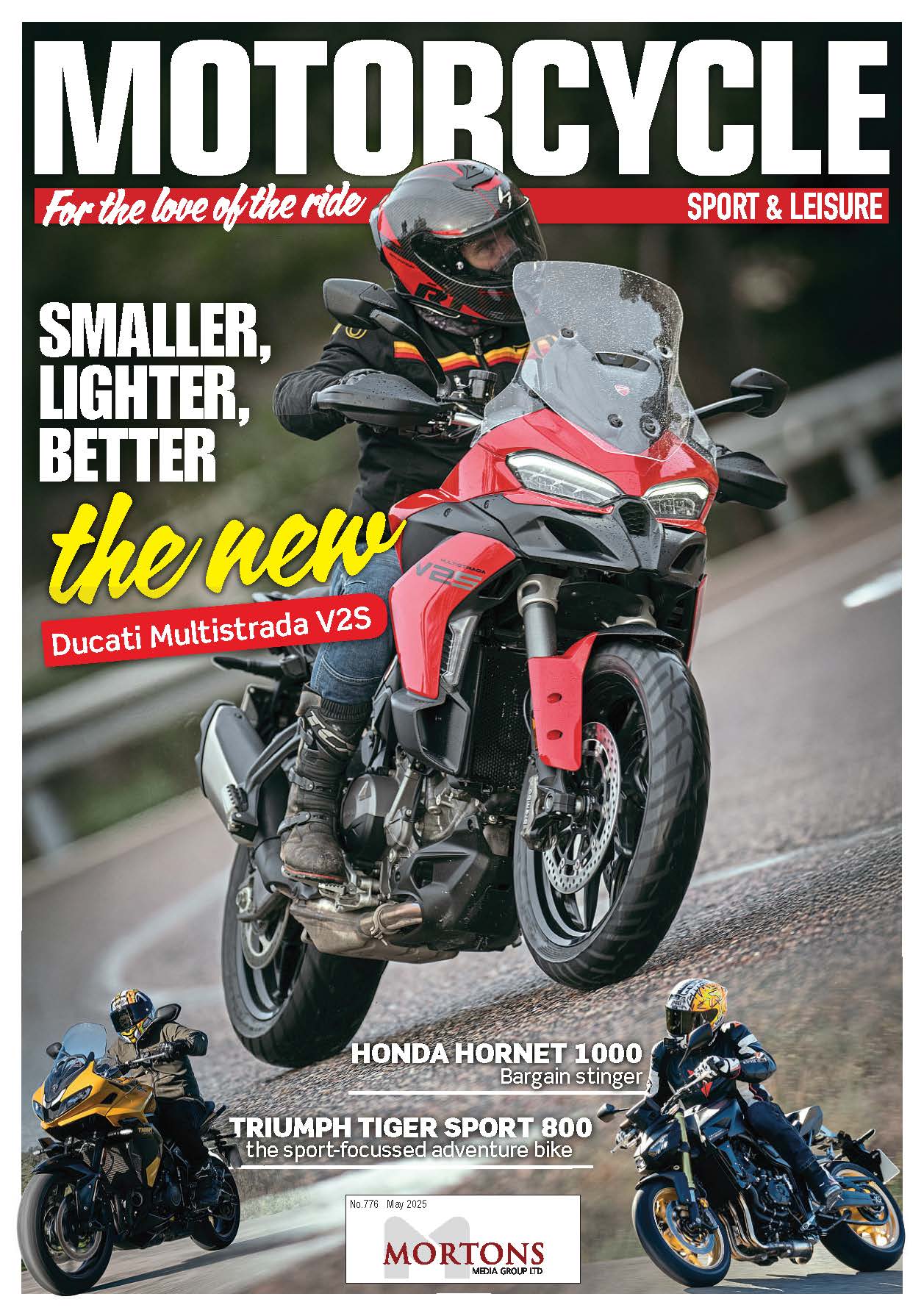Moto Morini’s properly back in business, with a pair of new machines which hark back to one of the most iconic bikes in its history.
WORDS: Dave Manning PHOTOS: Potski Media
The new Moto Morini Seiemmezzo (which is Italian for ‘six-and-a-half’) is a swift glance in the rear-view mirror for Morini; named with reference to the iconic 350cc air-cooled vee twin that was called the 3 ½. And this new parallel twin is of 650cc capacity. So 6 ½. Simple.

There are two versions to choose from: the STR (Street) and SCR (Scrambler), with the latter having wire wheels; a higher front mudguard; a longer rear muddie; different tyres; and a fly-screen above the headlight, as well as a number of different colour schemes. Aside from that, they’re identical.
Naturally, with the few differences that the two models have – including tweaks to the ergonomics in the form of different handlebars – they do feel slightly different to ride, but before we look at how that comes across on the road, let’s look at the bits that are the same, especially that 650cc engine.
With the way that the motorcycling world is in 2023, it’ll come as no surprise to hear that the engine is a parallel twin. Although, to be frank, the Morini’s powerplant is a little older than most, what with it being a CF Moto version of the venerable Kawasaki ER6 motor, as launched back in 2006. Much like the Moto Morini X-Cape, with which it shares its engine, the 6 ½ doesn’t quite have the same instant urge or free-spinning rev-ability that more recent parallel twins have developed – in part thanks to the current trend of 270° crankshaft layouts, while the Morini retains a more traditional 180° arrangement – but that doesn’t make it dull or outdated.
In isolation it’s a fine engine, being smooth, efficient and capable of out-accelerating pretty much anything with more than two wheels that you’re likely to meet on the roads on an everyday basis. Making 61bhp and 49lb-ft of torque, it’s admittedly no fire-breathing monster but it is a pleasing, efficient and competent powerplant.
The tubular steel frame is identical for both models, as is the swinging arm, rear shock and forks. However, the wheels are different – spoked for the SCR, cast aluminium for the STR – and although the wheels are the same size, as are the tyres, the rubber is different with semi-knobbly Pirelli MT60s for the SCR and road-biased Pirelli Angle GTs for the STR. All rather logical really.
While the engine could be seen as being a lower-spec alternative to equivalent powerplants on the market, Morini clearly has had no qualms in ensuring that other components aren’t quite so lowly. While not radially-mounted, the four-piston Brembo calipers and 298mm discs at the front (and 255mm disc, twin pot at the rear) are top grade, and matched to fully-adjustable Kayaba suspension front and rear, with a matching 120mm travel at both ends for both models.
With an initial ride on the street-focused STR, and an overriding impression of just how welcoming the riding position and ease of use are, I then slipped over on to the taller-looking (and feeling) SCR with its knobbly tyres and scrambler vibe. “Ooh, this feels more like my kind of bike!” I said out loud inside my full-facer, with those taller (by 35mm) and wider (70mm) bars instilling a sense of quicker steering and greater manoeuvrability, probably at the expense of lane-splitting slimness. And while those feet/hands/arse dimensions are undoubtedly different, the handling felt identical (as you’d expect) and equally as confidence-inspiring, so much so that I’d kissed peg to Tarmac within a couple of passes for the cameras, on a cold road and without trying especially hard to do so. And while this does reflect on how assuring the Morini’s handling is, one does wonder if ground clearance may become an issue on hot, grippy roads through the summer.
Jumping back on to the STR, I was actually really surprised to be thinking, “Ah, actually I like this one better!”, thanks to the slightly more compact riding position and less of a feeling of being open to the elements. Although, reading this back to myself and considering it once more, I’m now thinking that both styles of the 6 ½ have ergonomics that are to my liking, and that the only way I could choose one over the other would be dependant on the sort of riding I might be doing. The SCR and it’s more open riding position would be ideal for exploring and pottering along back roads and lanes (and blasting through mountain passes and gorges), but would be problematic in tight city traffic and might prove a little tiring on faster riding on motorways and the like, thanks to the wide bars and more upright stance turning the rider into more of a wind sail than an aerodynamic bullet…
It’s all too easy to assume that the folk who’ll choose a bike like the Seiemmezzo are those who choose form over function – that they focus on design and style rather than actual riding practicalities. And that’s unfair, as just about every motorcyclist wants their bike to look as good as it performs, and the Morini isn’t just a styling exercise. It’s a bike that is really easy to get on with – not something that can be said of other bikes that have style as their prime factor, and a large number spring to mind – for both experienced and new riders, and the riding position and seating arrangement will make for long days in the saddle without requirement for an osteopath appointment the following day.
The Morini is very much in the ball park for current mid-range naked bikes, being priced slightly below it’s main competitors; although the fact that it’s running a less powerful and slightly more dated engine, alongside a higher weight, means that it’s perhaps not as competitive as might be thought. While the SCR is a quid short of seven grand, at £300 less the STR is more competitively priced against other manufacturers’ products, which include such impressive bikes as the new Honda Hornet 750, the Yamaha MT-07 and the brand-new Suzuki GSX-S8, all of which have the aforementioned 270° crank layout, higher capacity and, unsurprisingly, more power. But have they got the style of the Morini? And what if you want something a little different to call your own?
Morini salesmen may have a hard time selling their wares in 2023, but I have a sneaky suspicion that there are a fair few potential buyers out there who’ll have their heads turned by the Seiemmezzo’s styling – and the lack of technological ‘gimmickry’ will definitely appeal to a certain segment of the market. And, while some may point out that the CF Moto engine is ‘out of date’, bear in mind that it does have 8000-mile service intervals (as an example, the MT-07 has 6000 service intervals).


